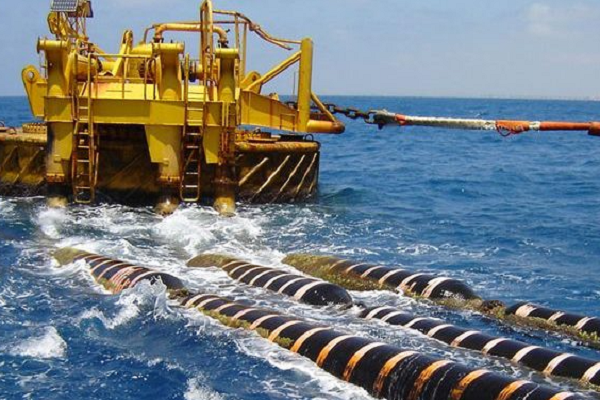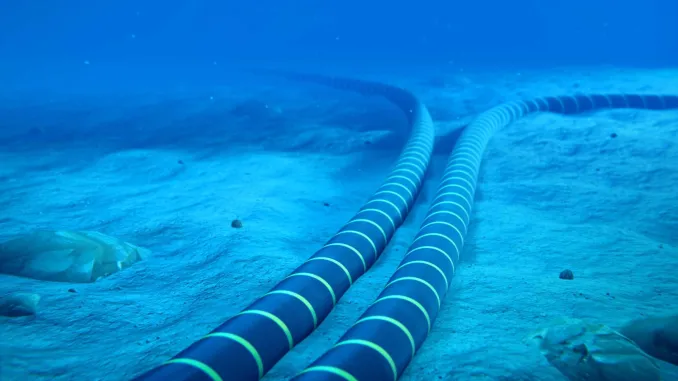The 45,000 km subsea 2Africa cable will land in Accra, Ghana, and Lagos, Nigeria, by Bayobab, the wholesale infrastructure company of MTN Group, in February 2024.
Currently under development is the largest subsea cable project in the world, a 2Africa consortium that includes Bayobab, center3, China Mobile International, Meta, Orange, Telecom Egypt, Vodafone Group, And WIOCC.
These two landings bring Bayobab’s total landing count for the tour to six. The tour is taking place in five different countries, with three stops in West Africa (Ghana, Nigeria, and Côte d’Ivoire) and one in South Africa.
Frédéric Schepens, CEO of Bayobab, expressed the company’s delight at the news of the 2Africa cable landing in Accra, Ghana, and Lagos, Nigeria, following two landmark landings in South Africa.
At its heart, Bayobab’s work is the 2Africa initiative, which aims to link Africa to the world and the world to Africa. He affirmed that the group is prepared to keep providing services that will boost the digital economy in Africa and contribute to the continent’s overall development.
Fair and equitable access to capacity in carrier-neutral data centres or open-access cable landing stations is made available to service providers in Ghana and Nigeria through these landings.
Read also: 2Africa Submarine Cable Arrives in Barcelona
The impact
Making the Internet more accessible for companies of all sizes and in all industries will also contribute to the growth of a robust Internet ecosystem. In order to finish the cable landings, Bayobab teamed up with MTN Opco’s.
In addition, Mohammed Aliyu, chief fiberco officer at Bayobab, stated that the company’s goal is to supply the necessary digital infrastructure to enhance the digital economy and to significantly support the capacity needs of the African continent.
These cable landings are giving this East2West project some serious cred. It’s going to help close the digital divide in West Africa and the rest of the continent by connecting several landlocked countries to subsea cables and providing dark fibre access and active fibre capacity across over ten African countries.
Nigeria and Ghana will be major players in West Africa’s digital economy. Thus, the 2Africa cable will significantly alter the connectivity scene in the area.
Rumour has it that Nigeria’s minister of communications, innovation, and digital economy, Dr Bosun Tijani, will formally announce the cable’s landing in the country.
Benefits of subsea cables
Submarine fibre-optic cables have several general advantages, such as:
Improving Connection: Sea cables are vital for linking various parts of the world, allowing data and voice communications to travel freely across oceans and continents. They link nations and continents with dependable, high-speed connections.
Online gaming, video conferencing, and financial transactions are examples of real-time applications that greatly benefit from reduced latency, which can be achieved through direct underwater connections between regions.
Improved Data Transfer Rates: Compared to earlier communication forms, the increased data transfer rates made possible by submarine cables are substantial. Applications and services that rely heavily on data are in high demand, and this helps to meet that demand.
International Cooperation: These cables pave the way for international cooperation by easing the transfer of data, information, and research between various nations and areas.
Economic Growth: Improved connectivity through submarine cables can contribute to economic growth by facilitating e-commerce, drawing investments, and supporting the digital economy.
Cultural Exchange: The installation of underwater cables has allowed for the global dissemination of media, information, and cultural artefacts, which in turn has helped to lessen prejudice and increase mutual understanding.
In the event that terrestrial communication infrastructure is disrupted due to network failures or natural disasters, submarine cables can offer redundancy and backup communication routes, which are crucial for disaster recovery and redundancy.
When undersea cables carry high-speed internet, it opens up previously inaccessible areas to digital services like telemedicine, online schools, and online learning, which can aid in regional development.
Undersea cable communication improves diplomatic and international relations by facilitating better cooperation and communication between governments and international organisations. The construction of new underwater cable routes frequently necessitates state-of-the-art engineering solutions, which in turn contribute to technological advancement and innovation in the telecommunications sector.
















